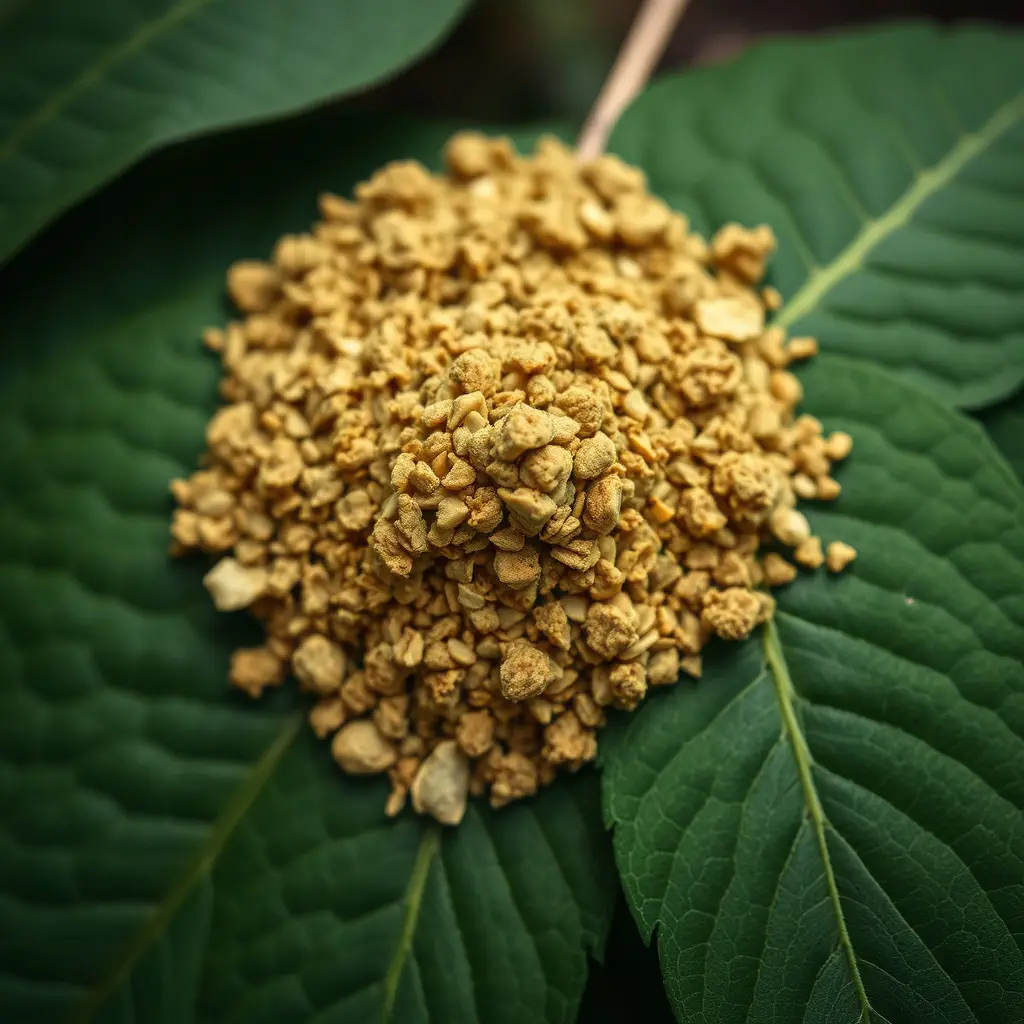Chronic Fatigue Syndrome (CFS) is a debilitating condition marked by severe fatigue that resists typical rest and impacts daily life. Symptoms often include sleep disturbances and cognitive problems. Kratom, derived from the Mitragyna speciosa tree, has gained attention as a potential natural remedy due to its alkaloids that interact with opioid receptors for pain relief and mood enhancement without strong sedative effects. Its cultivation, including in Utah, has become more popular among those with CFS and those looking to produce it commercially. While some CFS patients report subjective improvements from using kratom, it's crucial to approach its use with caution and under medical guidance. The potential of kratom for managing CFS symptoms is currently under investigation, emphasizing the need for scientific research to clarify its efficacy and safety. In Utah, the diverse climates offer suitable conditions for growing kratom, which could provide a local, natural option for CFS management. Prospective growers should adapt to Utah's environment to cultivate strains that thrive in the region, ensuring they maintain optimal growing conditions. This approach not only offers a sense of empowerment and control over well-being but also has the potential to be more cost-effective and reliable than commercial sources. Kratom can complement a holistic treatment plan for CFS, which includes addressing both physical and psychological aspects, and should be used in conjunction with professional medical advice and other therapeutic interventions for best results.
Chronic fatigue syndrome (CFS) presents a significant challenge for individuals seeking relief from debilitating symptoms. This article explores how kratom, a botanical substance gaining attention in natural medicine, may offer a novel approach to managing the condition. We delve into the intricacies of CFS and kratom’s potential role, followed by an overview of cultivating kratom in Utah, which has become a notable source for high-quality kratom. Finally, we guide readers on integrating kratom into a comprehensive holistic management strategy tailored to CFS. Growing interest in kratom as a therapeutic option for various ailments, including CFS, underscores the importance of understanding its cultivation and proper use.
- Understanding Chronic Fatigue Syndrome (CFS) and Kratom's Role in Management
- The Journey of Growing Kratom in Utah: An Overview for CFS Patients
- Integrating Kratom into a Holistic Approach to Managing Chronic Fatigue Syndrome
Understanding Chronic Fatigue Syndrome (CFS) and Kratom's Role in Management
Chronic fatigue syndrome (CFS), a complex and often debilitating condition characterized by severe, persistent fatigue that is not relieved by rest, impacts millions globally. Patients with CFS experience a diminished capacity to engage in normal daily activities due to this fatigue, which can be accompanied by a range of other symptoms such as sleep disturbances, cognitive impairment, and a host of other debilitating conditions. While the etiology of CFS remains poorly understood, with no universally accepted treatment regimen, there is a growing interest in the potential therapeutic role of kratom, a plant-based substance derived from the leaves of Mitragyna speciosa. Kratom has garnered attention for its alkaloid compounds, which interact with the body’s opioid receptors, providing pain relief and mood elevation without the sedative effects typically associated with opiates. In some cases, individuals managing CFS have reported improvements in their fatigue levels and overall well-being after incorporating kratom into their regimen. This has led to a rise in interest, particularly within communities like those in Utah, where the cultivation of kratom, as represented by the phrase ‘grow kratom Utah,’ has become an area of focus for both personal use and potential commercialization. It is crucial for individuals considering kratom as a management tool for CFS to approach its use with caution, understanding the need for careful dosing, the importance of consulting healthcare professionals, and the necessity for ongoing research to elucidate its efficacy and safety in this context. As such, the role of kratom in managing CFS is an evolving area of investigation that warrants further scientific scrutiny.
The Journey of Growing Kratom in Utah: An Overview for CFS Patients
Growing kratom (Mitragyna speciosa) in Utah presents a unique set of challenges and opportunities for chronic fatigue syndrome (CFS) patients seeking natural management strategies. The climate of Utah, characterized by its varied terrains and distinct seasons, can be particularly conducive to cultivating this tropical plant. With careful attention to the species’ native conditions, such as humidity levels, soil pH, and temperature ranges, Utah farmers and home gardeners can successfully grow kratom. The journey of growing kratom in Utah begins with sourcing the right strain for the region’s environment, ensuring that the plants receive adequate sunlight and protection from harsh elements when necessary. As the plant matures, it requires a balance of water and nutrients to produce the active alkaloids mitragynine and 7-hydroxymitragynine, which are believed by some to offer relief for CFS symptoms.
For CFS patients interested in cultivating their own kratom, it’s essential to start with a small, manageable number of plants to understand the specific care requirements. This approach allows individuals to closely monitor the plants’ progress and make informed adjustments to optimize their well-being. The process of growing kratom can be therapeutic in itself, offering a sense of purpose and control that is often lacking for those with CFS. Moreover, having a personal supply of kratom can provide a consistent source of the plant, which may be preferable for individuals who are cautious about the consistency and quality of commercially available products. As such, the cultivation of kratom in Utah holds potential benefits for CFS patients looking to manage their symptoms through natural means, with the added advantage of a local and potentially cost-effective source of the plant.
Integrating Kratom into a Holistic Approach to Managing Chronic Fatigue Syndrome
Incorporating Kratom into a comprehensive approach for managing Chronic Fatigue Syndrome (CFS) can be a nuanced yet effective strategy. For individuals residing in or near Utah, where the climate and conditions are conducive to growing diverse plant species, including kratom, integrating this plant into their holistic health regimen may offer significant relief. Kratom, derived from the leaves of Mitragyna speciosa, a tree native to Southeast Asia, has been traditionally used for its stimulating and analgesic effects. In Utah, where some enthusiasts have learned how to grow kratom plants, patients with CFS might experiment with this natural remedy under professional guidance. It’s crucial to approach the use of Kratom with caution, as it interacts with various biological systems; consultation with healthcare providers is essential for personalized and safe application within a holistic care plan.
A holistic management strategy for CFS often involves addressing both physical and psychological components of the syndrome, and kratom may play a role in this multifaceted treatment. The active alkaloids found in kratom leaves, such as mitragynine and 7-hydroxymitragynine, have been reported to influence neurotransmitter systems that regulate mood, pain perception, and energy levels—key areas of concern for CFS patients. In the context of a holistic approach, kratom might be used in conjunction with other therapeutic practices like cognitive-behavioral therapy, dietary modifications, and regular physical activity tailored to the patient’s capacity. This integrative method strives to improve overall well-being by targeting both the symptoms of CFS and its underlying causes, potentially leading to a more sustainable quality of life for those affected.
In conclusion, chronic fatigue syndrome remains a complex and often enigmatic condition, yet its management can be significantly enhanced through the thoughtful integration of kratom, particularly when grown in environments like Utah. The insights shared in this article underscore the potential benefits of kratom for CFS patients seeking alternative or complementary strategies for symptom relief. As with any treatment, it is imperative to approach its use with caution and under the guidance of a healthcare professional, ensuring both safety and efficacy. Growing kratom in Utah presents unique opportunities for patients to have access to high-quality kratom while also supporting local agriculture. Ultimately, this holistic approach may contribute to improved quality of life for those affected by CFS, offering a glimmer of hope in their journey towards better health and well-being.






